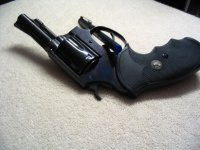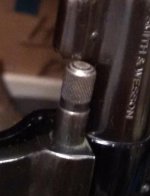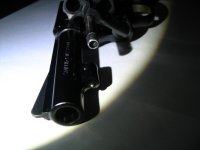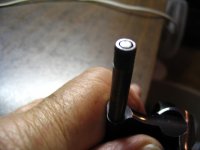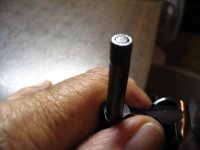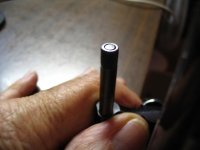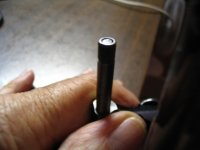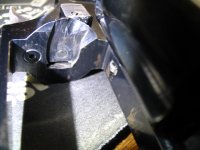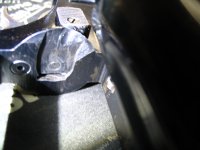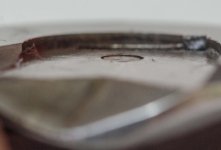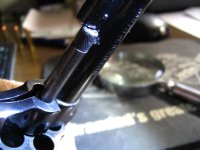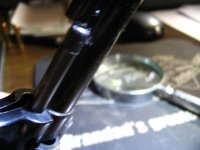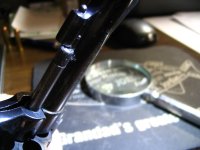I have had two models with a "notchy" feel to the swinging out of the cylinder when the latch is pressed fully forward. In both cases the problem (as I diagnose it) is that the bolt (the part that pushes forward on the spring loaded locking pin in the middle of the extractor star when you push the cylinder release) can not move far enough to come fully flush with the recoil shield.
The locking pin in the center of the extractor star has a convex end, and if the bolt comes fully flush with the recoil shield this pin just slides smoothly off the bolt and onto the recoil shield as the cylinder swings out. But if the bolt is not fully flush with the recoil shield when you start to swing the cylinder out, the convex segment has to ride up over the tiny ridge made by the recoil shield around the not-quite-flush bolt. (If the locking pin were square on its end it would stay locked in its locking hole unless and until the bolt lifted it up flush - the convex end allows it to ride up and over the lip of the recoil shield hole, but it takes extra pressure on the side of the cylinder while opening it to make that happen.)
One of the guns with this problem was a brand new 432PD that I sent back to the factory for this and another problem. They determined the gun was unrepairable and would not be returned. They have no 32 caliber guns to offer as replacements, and we are in the midst of trying to find an acceptable (to me) substitute from their current production lineup. They have said they will NOT give me the money I paid for the gun.
The other "notchy" gun is a 2" M64, which works perfectly except for a slight hitch when first swinging the cylinder out. It is a no-lock gun whose innards have worked themselves into a glass-smooth symphony. There is no way I will ever let the factory get their hands on this one, after my 432 experience, as I'd be concerned they'll condemn it too and offer a new 4" 64 with a lock in its place. Sorry, but I prefer the notch. And sadly, this experience has caused a reexamination of my previously favorable view of the "lifetime warranty" people talk about. I suppose some gun is better than nothing if your gun truly breaks, but for anything less than a completely nonfunctional gun with no prospect for a fix other than by the factory, letting the factory get hold of a gun that you like runs the risk of being told they can't/won't fix it and you can only have something from the current product line to replace it. If what they make now doesn't fit your preference for caliber/finish/features, too bad.
I have not come up with a homebrew solution to the "short bolt" problem as I diagnose it. I've taken the 64 apart and there are no bits of crud limiting the bolt's forward travel, either on the frame near the bolt hole or in the frame slot where boss for the latch button travels. There might be a way to take a few thousandths off the front of the boss, to let it go a tiny bit farther forward, but the problem isn't bad enough that I've tried to explore that in detail.

